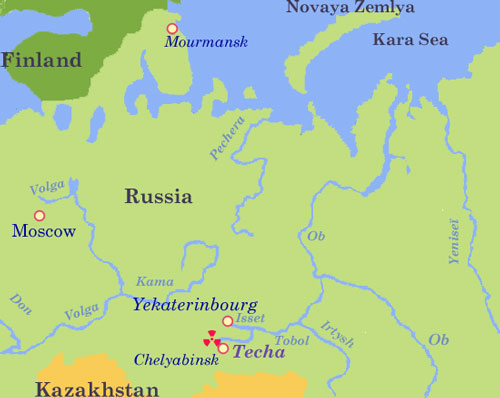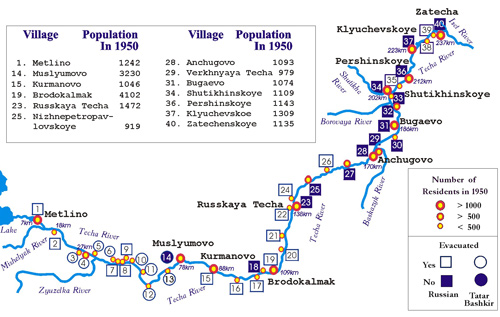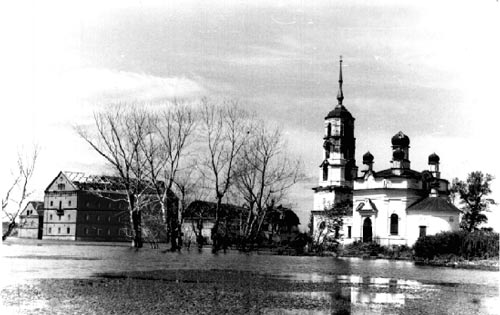A military long-hidden nuclear accident of the Soviet era

A secret center in the southern Urals
After the Second World War, the Soviet Union established top-secret military centers far in the inland, out of reach from enemy aircraft. The center of Mayak in the southern Urals was for the development of heavy water and natural uranium reactors to produce plutonium of military quality. This site was the subject of accidents and infections, which were ignored for many years.
© IN2P3
Long before Chernobyl, it was suspected, without proof, that the Soviet Union had a disastrous record in terms of safety and nuclear environment. It was not because of a lack of Soviet engineers and physicists knowhow who realized prowess to develop their own nuclear expertise.
At the time of the five-year plans, it was sincerely believed that science and technology would allow humans to do everything. There was the idea of using nuclear power to realize titanic work. In Siberia rivers were diverted, with atomic blasts, to irrigate cotton fields, with the consequence to dry the Aral Sea.

Evacuation of villages along the Techa river
Map of the Techa River and riverside villages contaminated in 1950. Before the contamination of the river, the total population was of 27,454 people. The populations of villages located far upstream from the river were evacuated, some ethnic russians, others being Tatars or Bashkirs.
© R. Wilson et al
In the 1950s nuclear technology was yet fully developed and there was little knowledge – especially in Russia – about the future of radioactive waste in natural ecosystems and their effects on humans. Therefore, efforts to prevent the spread of radioactivity in the environment were inadequate.
The most serious incidents occurred at the site of Mayak, near Ekaterinburg, whose surroundings were severely contaminated with relatively long-lived radionuclides such as cesium-137 and strontium-90.
This site of Mayak was the first nuclear complex of the Soviet Union, built in the southern Urals after the war, for the manufacture of plutonium for military purposes.

Metlino Village
Symbol of the disaster, the village of Metlino was located 7 km downstream of site of the radioactive releases. After the evacuation of residents in 1951, all buildings were destroyed except for the mill and the church that can be seen in this photograph, dating from 1965. The pond in the foreground is the reservoir No. 10 set up in 1956. The natural pond of Metlino is located behind the mill.
© R.Wilson et al (Picture by E.I.Belova is presented from personal archives of Dr. Nelli Safrnova with her permission)
The Techa River accident was the one involving the greatest number of people exposed to doses exceeding 50 mSv and for which the study is the most advanced. A significant impact of radiation on the population was observed.
Other articles on the subject « Nuclear Accidents »
The INES scale
The severity scale of nuclear accidents Nuclear installations and their operation are complex and[...]
Accidents of radioactivity
The importance of a close monitoring of radioactive sources… In many countries, the possess[...]
Accident Causes
Human errors, design flaws and natural cataclysms A nuclear accident dwarfs all other types of ac[...]
Windscale Accident
Windscale : an accident of the U.K nuclear weapon program (1957) The fire which occurred the 10th[...]
Three Mile Island
1979: A major accident that led to the destruction of a reactor The Three Mile Island plant (TMI)[...]
Tokaimura Accident
1999 : a « criticity » accident in Japan This surprising accident of « criticality » came about i[...]